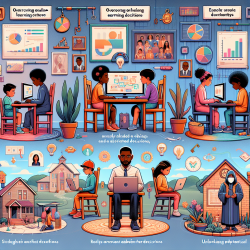Unlocking Potential: Bridging the Gap in Virtual Learning for Every Child
The COVID-19 pandemic has reshaped the educational landscape, introducing challenges and opportunities in equal measure. A recent study, "Virtual Learning in Kindergarten Through Grade 12 During the COVID-19 Pandemic and Chronic Absenteeism," published in JAMA Network Open, provides a data-driven examination of the relationship between virtual learning and chronic absenteeism. This blog aims to translate these findings into actionable insights for practitioners dedicated to improving educational outcomes for children.
Understanding the Data
The study analyzed data from 11,017 school districts across the United States, focusing on the 2018-2019 and 2021-2022 school years. The findings revealed a stark increase in chronic absenteeism rates, which rose by 13.5 percentage points, from 15.9% to 29.4%. Notably, districts that relied heavily on virtual learning during the 2020-2021 school year experienced higher absenteeism rates, particularly in areas with high poverty levels.
Key Insights for Practitioners
For practitioners, these findings underscore the importance of understanding the socio-economic factors that influence absenteeism. Here are some actionable insights:
- Targeted Interventions: Focus on districts with high poverty rates, where virtual learning is more likely to exacerbate absenteeism. Implement support systems tailored to these communities.
- Hybrid Learning Models: Consider hybrid models that combine the flexibility of virtual learning with the engagement of in-person instruction. The study found no significant increase in absenteeism with hybrid learning, suggesting it may be a viable alternative.
- Data-Driven Decision Making: Use data to identify at-risk students and tailor interventions accordingly. This approach ensures resources are allocated effectively to those who need them most.
Encouraging Further Research
While the study provides valuable insights, it also highlights the need for further research to establish causal relationships and explore the underlying reasons for increased absenteeism in virtual settings. Practitioners are encouraged to engage in research initiatives that delve deeper into these issues, potentially collaborating with academic institutions to develop comprehensive solutions.
Conclusion
Virtual learning is here to stay, and understanding its impact on student attendance is crucial for shaping future educational policies. By leveraging data and focusing on socio-economic factors, practitioners can develop strategies that minimize absenteeism and maximize student engagement. Together, we can ensure that every child has the opportunity to thrive, regardless of their learning environment.
To read the original research paper, please follow this link: Virtual Learning in Kindergarten Through Grade 12 During the COVID-19 Pandemic and Chronic Absenteeism.










